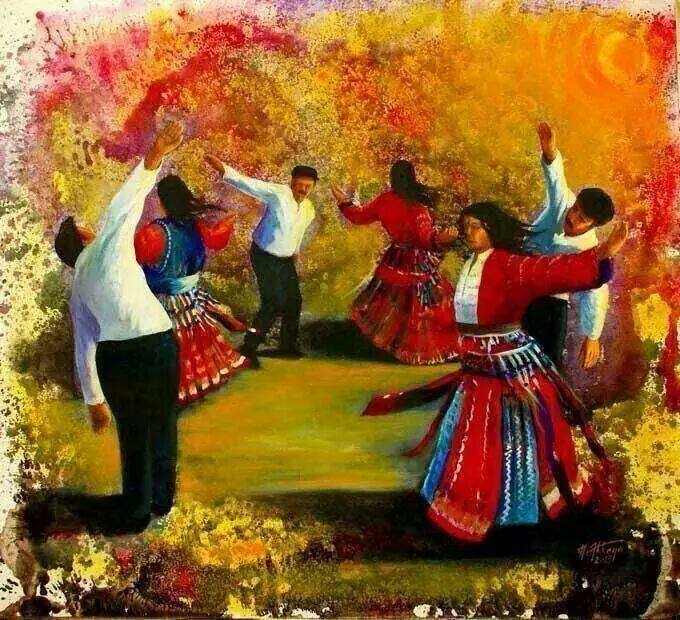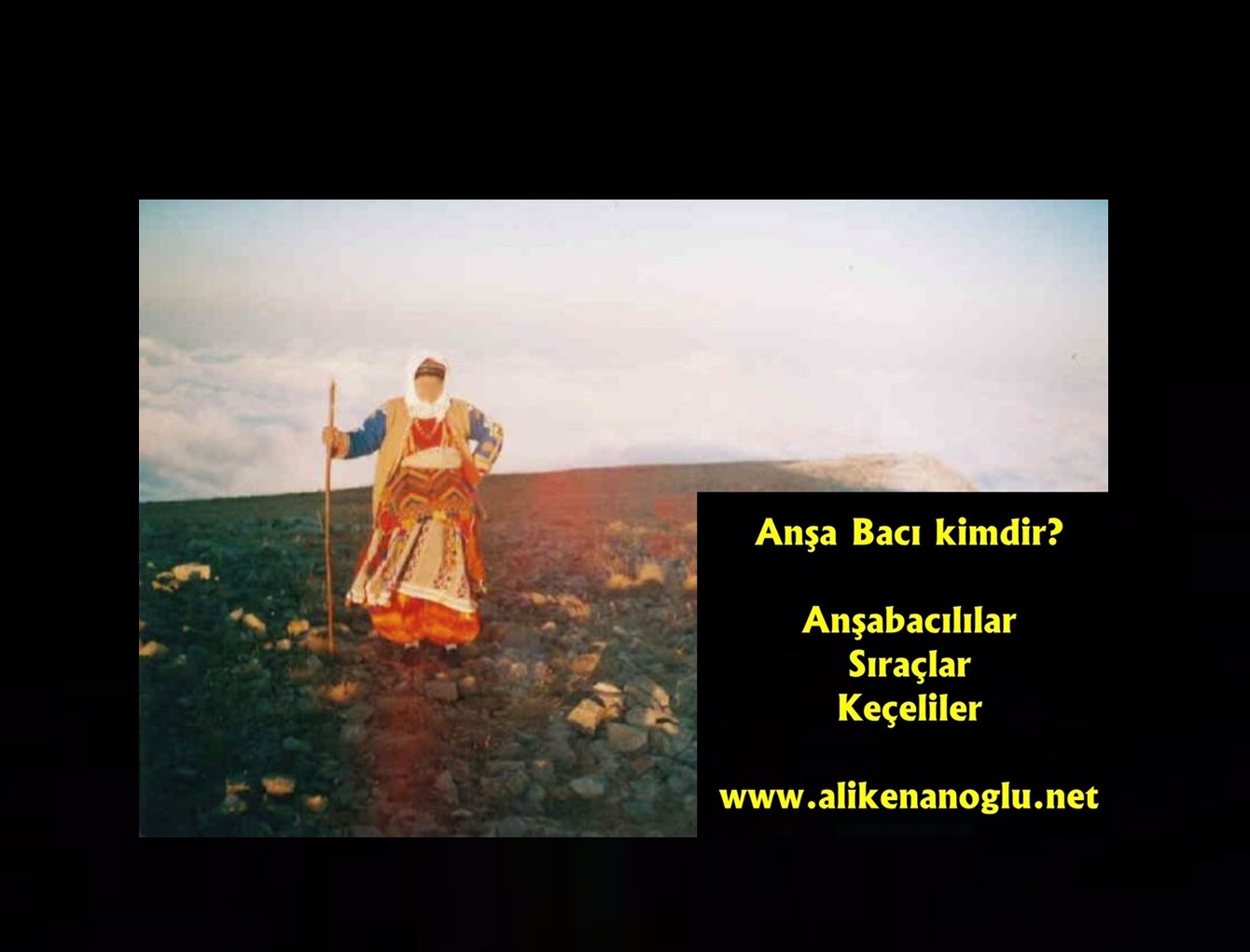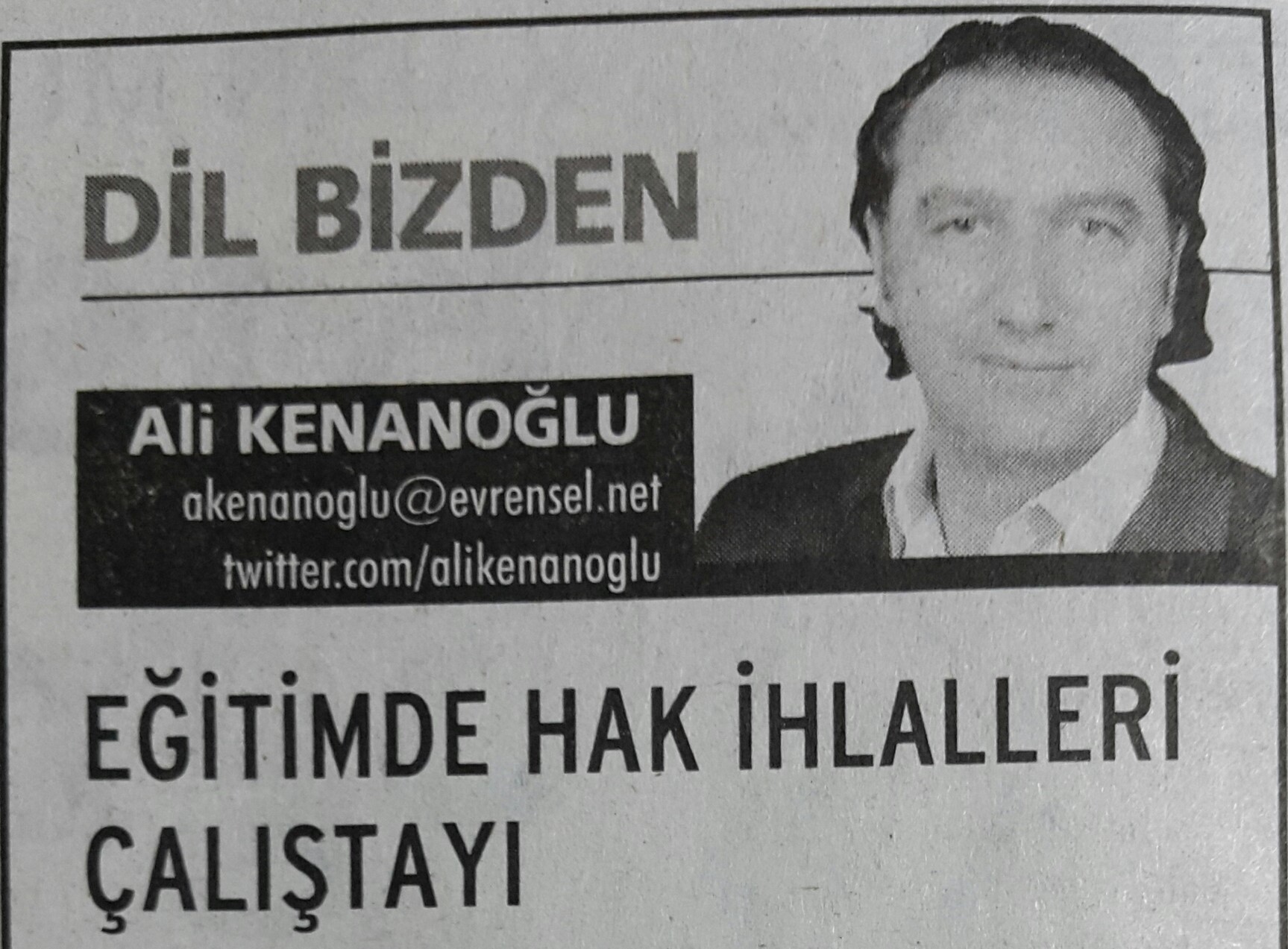How to Perform Hubyar Semah
SEMAHLAR
&
HUBYAR SEMAHI
Ali KENANOĞLU
CID – UNESCO Uluslararası Kültürü Kongresi
24-27 Kasım 2011
Kadir Has Üniversitesi
İstanbul, Türkiye
SEMAH
Semah is a generic term employed to name a variety of ritual dances, which is performed as an integral part of Alevi cem rituals. Semah performers are accepted as one of 12 posts, which are required to conduct cem rituals. Some of other posts are: dede (the spiritual guide) who supervises the ritual, gözcü (the watcher) who assists the guide in keeping order during the ritual, zakir (the player) who plays spiritual music, meydancı (the keeper of the meydan) who maintains the ritual ground.
At the certain stage of the ritual, a group of male and female members of the congregation comes to the ritual ground to perform semah accompanied by live music performed by zakir (the Player) with bağlama (Anatolian lute).
On the question of origin, it is explained that semah symbolizes Alevi cosmology, which is grounded on the basic idea of ultimate unity (birlik, vahdedi vücud) where everything is whirling at the center of the one. Semah also exhibits that in their long journeys in the universe, humans find what they are looking for in their inner-universe. And what is searched for in this journey is the love of God, which is thought as the unity itself. Since every living creature is believed to be carrying an essence from the creator, rejoining with the unity is an ultimate bliss.
Semah is a moment of collective effervescence in which Alevi cosmology becomes apparent in the unity of music and lyrics and rejoining with the unity is celebrated.
In Alevi tradition, it is believed that semah was performed firstly performed at the Council of Forties (Kırklar Meclisi), which is a mythical meeting the Prophet Mohamed happened on on his way back from Miraç, the heavy journey during which he speaks to God.
As mentioned before, semah is the generic term for a variety of ritual dances in Alevism. Alevi communities living in different parts of Anatolia are affiliated with particular ocaks (spiritual centers) representing different traditions. All these specifications can have reflection on variations in semah. Music, lyrics, figures and even the number of participants can vary from one to another community.
However, it should also be mentioned that all different versions of semah share certain common principles. For instance, hands are not touched in none of semah versions. While they are whirling, performers cannot turn their back to dede (spiritual guide), who supervises the ritual and sitting on a sheepskin (post) located at circumference of the circular ritual ground. In doing so, in every turn on the spiritual ground, each of performers come face to face with their spiritual guide. As a result of this principle all versions of semah has very special choreography regardless of particular specifications in figures and music. In this sense, each of different versions of semah becomes one in goal and meaning.
Some versions of semah: Hızır (Khızır, saintly figure in Alevism) Semahı, Alaçam (Spruce) Semahı, Kırklar (Forties) Semahı, Ali Nur Semahı, Kırat (Gray-Horse) Semahı, Turnalar (Cranes) Semahı, Dem Geldi (the moment comes) Semahı, Çapraz (Cross) Semahı, Hubyar (a spiritual center) Semahı.
Today, we will focus on Hubyar Semahı, which is known as one the most stirring semah with a quick tempo, and therefore, which is also popularly mentioned in research and visual documentations on Alevism.
Hubyar Semah is specific to Hubyar and Sıraç Alevi communities living in Tokat, Sivas, Çorum, Amasya, Samsun and Yozgat, (Central Anatolia).
How to Perform Hubyar Semah:
Costume:
If we consider traditional forms of Hubyar Semah performed in Hubyar and Sıraç villages, it is not possible to define any specific costume for performing semah. Regional costumes are also worn during semah. To illustrate, women wear coin or gold embroidered fes and three- or five-ply dress and skirt. Men can wear anything, which should be suitable to “edep ve erkân” (rules of good manners and conduct).
However, contemporary Alevi associations tended to form special training and performing semah groups (semah ekibi/topluluğu) since the early 1990s. In this process, a specific set of costumes has been designed for these modern semah groups on the basis of regional traditional outfits. For instance, wearing black trousers, black waistcoats, black flat baps and white shirts became “traditional” costume for male performers of Hubyar Semah. Urban Alevi communities now accept these costumes as authentic outfit of their belief practices.
Instrument:
Hubyar Semahı is accompanied by bağlama and kemani, both of which are called saz. The number of saz players, known as aşık, can vary from one to four.
Semah Performers:
Hubyar Semahı is performed by a group of three female and three male ritual participants. If the number of participants is not high, two female and two male can perform the semah. Who are going to perform the semah is determined by Gözlekçi (Gözcü Baba – the Watchmen) during the cem ritual. As mentioned, the watcher is also one of 12 posts, which is responsible for organizing the ritual. Those who are chosen by the watcher stand, then come to the ritual ground in bare feet one female after another male and lay together after kissing the dede’s hand. As they constitute the group, the performer congratulates each other before performing semah.
Music and Lyrics:
Hubyar Semah has its own musical base and lyrical structure. Contemporary national and local artists also perform this special music for non-ritual purposes.
Semah is performed is accompanied by music and hymns. Hymns, known as deyiş (saying) or nefes (breath), are long epic and esoteric poets explaining Alevi cosmology and history. Here, we would like to present two samples performed specifically for Hubyar Semah.
Hubyar Semahı 1
Evel erkân ile, evel yol ile
Gelsin hizmet ehli semah eylesin
Yaradanım yardım etsin kuluna
Gelsin hizmet ehli semah eylesin
Dolduğumuz evler bol olsun nurdan
Biz de böyle gördük uludan pirden
Yardımcımız olsun ol Şah-ı Merdan
Eylesin erenler semah eylesin
Yaylarsan, çık Şah’ın yaylasın yayla
Söylersen Muhammed, Ali’den söyle
Ali’m aşkına gel bir semah eyle
Eylesin erenler semah eylesin
Semah eyleyenler haslar hasıdır
Semah eylemeyen Hak’ın nesidir?
Abdal Pir Sultan’ım er nefesidir.
Eylesin erenler semah eylesin
Muhammed Mustafa Habibullah’tır
Şu dünyaya baki kalan Allah’tır.
This first deyiş invites the participants to perform semah by explaining that semah is an eternal good deed for Alevis.
Hubyar Semahı – 2
Yüce dağ başında bir kuş uçurdum
Ana nenni nenni bir kuş uçurdum
Ben meylimi bir güzele düşürdüm
Dilber nenni nenni yavrum düşürdüm
Duydum nazlı yarim yad eller almış
Ana nenni nenni yad eller almış
Vallah dostlar ben aklımı şaşırdım
Dilber nenni nenni vallah şaşırdım
Yürü güzel yürü yolundan kalma
Ana nenni nenni yolundan kalma
Her yüze güleni dost olur sanma
Dilber nenni nenni dost olur sanma
Ölümden korkup da sen geri dönme
Ana nenni nenni sen geri dönme
Yiğidin alnına yazılan gelir
Dilber nenni nenni yazılan gelir
Ceylan bakışına kurban olduğum
Sallanma karşımda öldürme beni
Ah gülüm gülüm yürüsene yavrum
Mecnun edip beni de düşürdün çöle
Kerem gibi burda da yandırma beni
Ah gülüm gülüm yürüsene yavrum
Bu kadar sallanma da öldürdün beni
Ölürüm unutmam da sevdiğim seni
Ah gülüm gülüm yürüsene yavrum
Bırakın sallansın da nazlı gelini
Güzelin döndüğü de meydan öğünsün
Ah gülüm gülüm yürüsene yavrum
This second deyiş portrays a miserable feeling of blind love and longing for precious beloved one. However, it should also be mentioned that the beloved (female) one (yar) could refer to God in Alevi esoteric poetry.
Performing Semah:
Hubyar Semah has three main parts known as: Ağırlama (Accommodating), Hızlanma (Speeding) and Dönme (Whirling). The performers begin with accommodating part as the players start playing music and singing lyrics.
In this part, the male performers begin by holding their arms open at their chest-level and their palms face the ground. This gesture symbolizes a bird flying in the sky. The female performers hold same gesture by their hands face the roof. The performers conclude this part by forming a circular form on the ritual ground and then they began walking in circular form. As music reaches a quick tempo, the performer began whirling.
The act of whirling in Alevism is different than that of in Mevlevi (Whirling) Dervish tradition. The performers whirl around themselves individually, in pairs as couples and also as a group together by drawing a large circle counter-clockwise on the ritual ground.
At the end of the whirling part, dede blesses the performers and they return among the ritual participants sitting at the circumference of the ritual ground. Any participants of the ritual can ask to stand for semah.
Ali KENANOĞLU
Kaynaklar:
- Hubyar Sultan Ocağı ve Beydili Sıraç Türkmenleri (Ali Kenanoğlu – İsmail Onarlı) 2002 Hubyar Sultan Alevi Kültür Derneği Yayınları
- Alevi Yolu Erkanı (Hubyar Ocağı Uygulamaları ile) Derleyen : Mehmet Sarıyar – 2008
Sultan Alevi Kültür Derneği Yayınları
- Berlin AAKM Inanç Kurulu dedeleri (http://www.alevi.org/alevi-ogretisi/alevilikte-semah.html)




